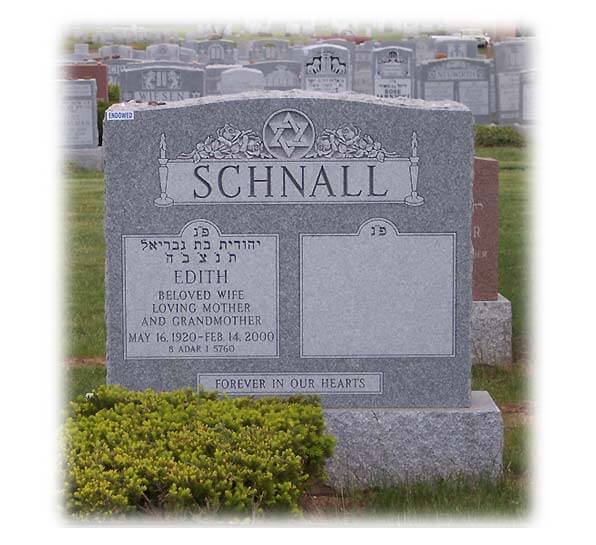jewish burial customs headstone
Our rabbi and cantor presided over the brief but moving ceremony. Jewish headstones monuments and grave markers There are many customizable components of an everlasting memorial.
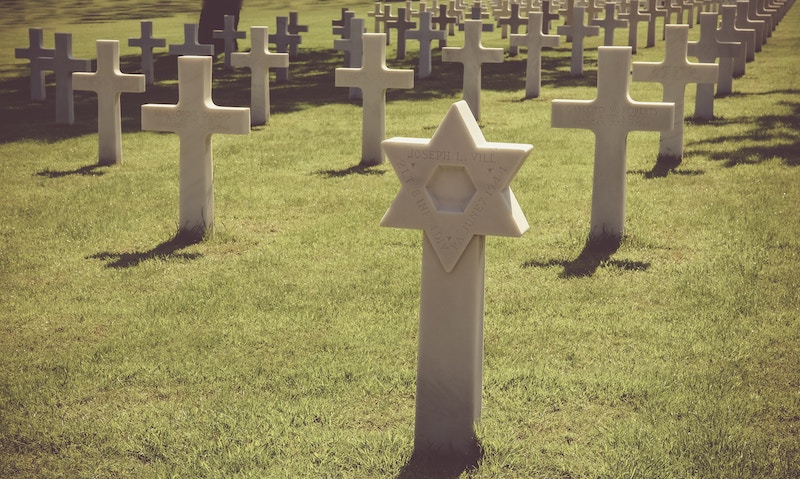
Headstone Unveiling In Jewish Mourning A Guide Cake Blog
In some communities families choose not to mark the grave with a Jewish headstone until the ending.

. Our goal is to help honor your loved one and lend a hand during the Jewish funeral planning process. The Matzeivah or Tzion - Tombstone. Other Burial rules and customs Placing Stones on Headstones Time of Death Rituals After death the entire body must be washed thoroughly.
The range of Jewish customs on this point is very broad now and in some Jewish communities especially in North America there are no. But Jewish authorities have often objected to bringing flowers to the grave. Other prayers may be recited as well.
Starting at 469 - Free Shipping. Burial is also not allowed on some Jewish holidays. The tombstone is usually placed at the head of the grave and the plot outlined with a low lying frame.
Finally the Kaddish is recited and the cloth or. After that all those present place a small stone on the grave. The deceased is then dressed in white burial shrouds.
This time signifies final acceptance and being at peace with the passing of a loved one. Where a grave is opened or disturbed by the elements desecration or other causes customs impose the immediate re-burial of the remains. Many erect the tombstone on the day after Shiva which is eight days from burial.
It also enables visitors to partake in the mitzvah tradition of commemorating the burial and the deceased. Within the Jewish faith it is customary to leave a small stone on the grave. According to Halacha Jewish Law the unveiling of the stone can occur between the end of Shiva and the Yahrzeit year remembrance date.
Most Jewish headstones in the Sephardi tradition are horizontal rectangular slabs. Dictated by Jewish funeral traditions the unveiling ceremony generally takes place at the end of the grieving process. The headstone or footstone may be erected at the end of shiva or up to twelve months after death.
Jewish tradition suggests waiting a year before setting the headstone. Our synagogue recommends setting the headstone between six to 18 months after the death. At Manhattan Jewish Funeral Home we understand the importance of Jewish headstones and how it should both celebrate your loved ones life and express their faith.
Kevura or burial should take place as soon as possible after deathThe Torah requires burial as soon as possible even for executed criminals. Ad Excellent product and customer service. Jewish law and tradition require no special ritual for the unveiling.
The use of the pine box signifies the Jewish belief that all are equal in death but it also complies with the strong Jewish belief that. Its more of a modern custom for this symbol to appear on the headstones of Jewish men. That is why today one rarely sees flowers on the graves in traditional Jewish cemeteries.
The six pointed star Shield of David or מגן דוד is the most recognizable symbol of the Jewish religion. Our online design tool allows you to create a very special one of a kind memorial. Yet the prevailing view was that bringing flowers smacks of a pagan custom.
Setting a tombstone at the gravesite has been a custom among Jews since Biblical times and is a fitting way to honor the deceased. Its a way of observing the passage of time as a part of the grieving process. The menorah is the symbol of Judaism and represents the candelabra that was housed in the Temple in Jerusalem.
The symbol represents pious or. While placing a rock on a tombstone is an old Jewish custom placing flowers at a gravesite is not. It is then submerged in water or its poured over the body which is a ritual bath called taharah.
According to Minhag Yerushalayim the custom of Jerusalem after the burial the head of the Hevra Kadisha asks forgiveness from the deceased lest they showed disrespect to him during the Tohorah washing of the body funeral or burial. The Custom Within the Jewish tradition mourners visiting the gravesite of a loved one will often place a visiting stone atop the headstone or gravemarker or somewhere on the gravesite itself before departing. You may choose to design a single double family or estate Jewish cemetery memorial.
We specialize in providing custom granite headstone and gravestone options in varying styles. There are scattered Talmudic mentions of spices and twigs used in burial Berakhot 43a Betzah 6a. These styles can be customized in.
A tombstone serves to identify the grave so that relatives will find it when they visit honor the memory of the deceased and identify a place of burial so that kohanim descendants of ancient Jewish priests will avoid it as required by Jewish law. Placing a stone on the grave serves as a sign to others that someone has visited the grave. The size shape and color can vary as can the personalization or ornamentation you may choose to include.
Normally the earth over a Jews grave should not be disturbed and disinterment is forbidden. Next there is a eulogy from either the rabbi or a family member. Members of the Jewish faith are customarily buried in a simple pine casket free of nails or other metals.
First there are readings from the book of Psalms. Burial is delayed for the honor of the deceased usually to allow more time for far-flung family to come to the funeral and participate in the other post-burial rituals but also to hire professionals or to bury the deceased in a cemetery of their. It is a tradition to place rocks on Jewish headstones.
Regardless of which style of headstone is used you may see rocks on top of it. At that point the Moleh or Memorial Prayer takes place. However it has become an American Jewish tradition to have a formal unveiling ceremony at which time family and friends visit the grave and view the newly erected headstone.
Jewish tradition makes no stipulation as to the size or type of marker or monument but most cemeteries have specific guidelines. A tombstone is an important part of Jewish law to ensure that the deceased will never be forgotten. Meanwhile the Ashkenazi Jews traditionally erect a vertical slab gravestone with a top that is rounded or pointed.
In life people may enjoy the beauty of their physical surroundings but when they die all of their material possessions and beauty are meaningless and left behind. The visitor positions the stone on the grave using his or her left hand. Ad Memorialize Your Loved One Forever With Our Custom Headstones.

Pin On Artistically Upright Monuments

Custom Grave Marker By Pacific Coast Memorials Unusual Headstones Cemetery Art Grave Marker

Leaving Stones When Visiting A Grave Jewish Cemetery Burial And Mourning Customs From Jcam

Prices For Bevel Marker Monuments For Jewish Memorials

Cemetery Installed Arlington National Cemetery Color G614c Medium Grey Memorial Type Upright Companion Memor Granite Headstones Headstones Granite Memorial

Custom Designed Upright Monument With Blessed Mother For 2 Memorial Statues Granite Memorial Statue
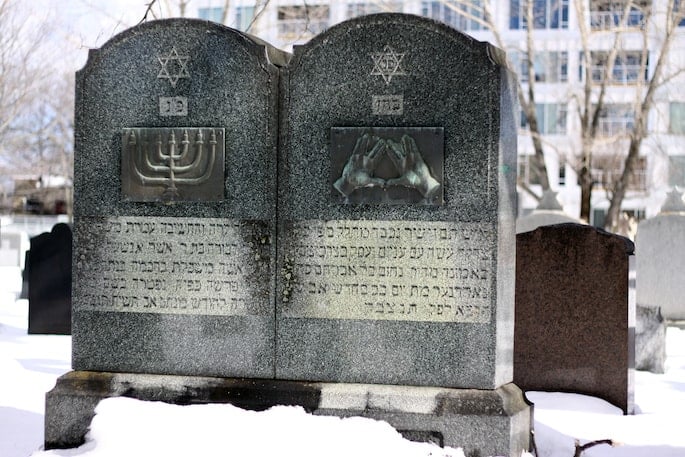
Cemetery Grave And Tombstone In Judaism Death Mourning

Why Jews Put Stones On Graves My Jewish Learning
Complete Guide To Jewish Orthodox Burial Rituals And Caskets Trusted Caskets

Jewish Cemetery Symbols Jcam Foundation Education Topics
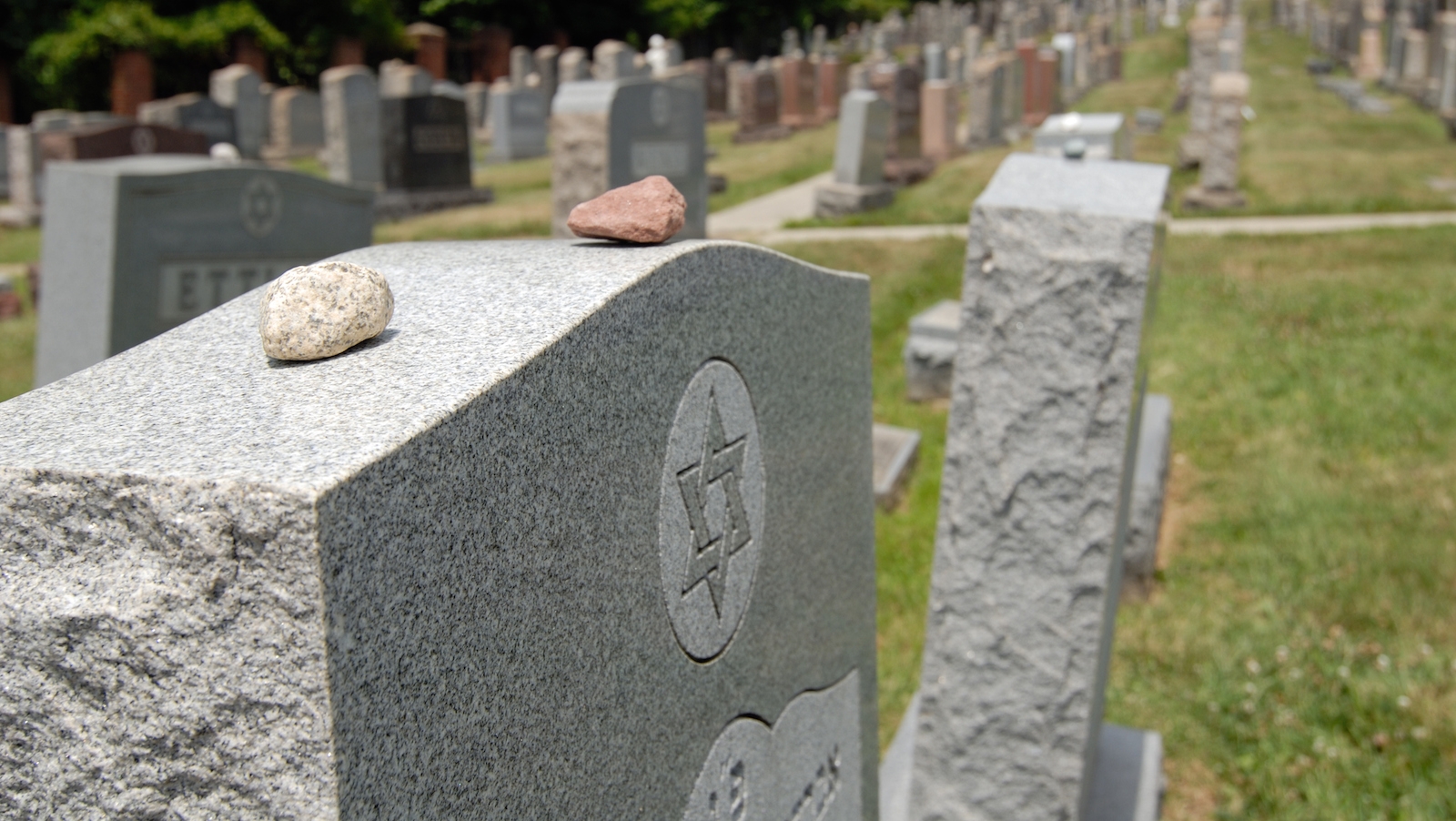
Why Do Jews Put Stones On Graves My Jewish Learning
Why Do Jews Place Stones On Graves Houston Jewish Headstones

Mark Rothko Mark Rothko Rothko Garden Sculpture

Jet Black Granite Single Upright Headstone Memorial In 2021 Headstones Black Granite Granite Headstones

Monument For Four Family Members Cemetery Monuments Grave Headstones Headstone Inscriptions

Jewish Unveiling What To Expect Death Mourning
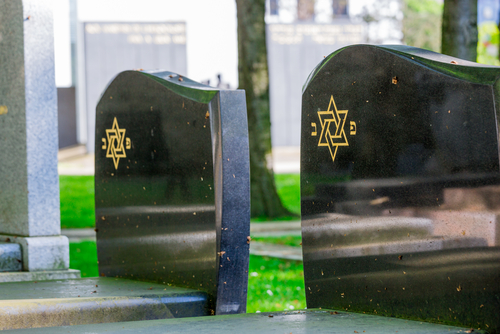
Traditions For A Jewish Burial St Charles Monuments Long Island

